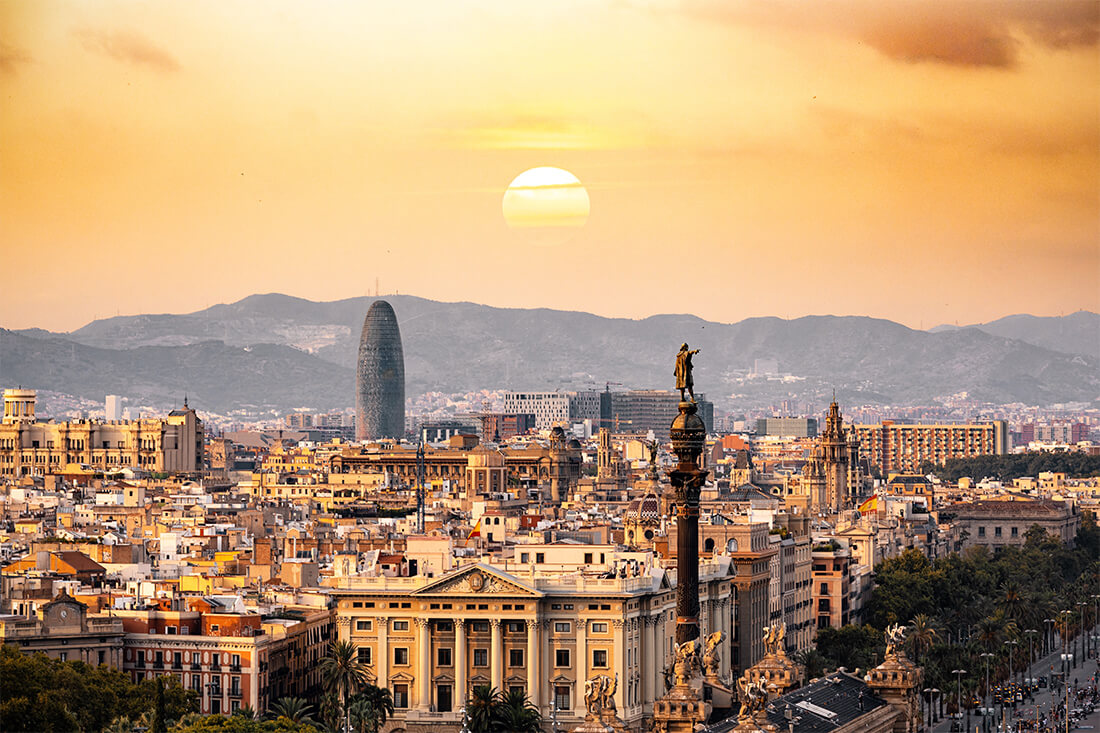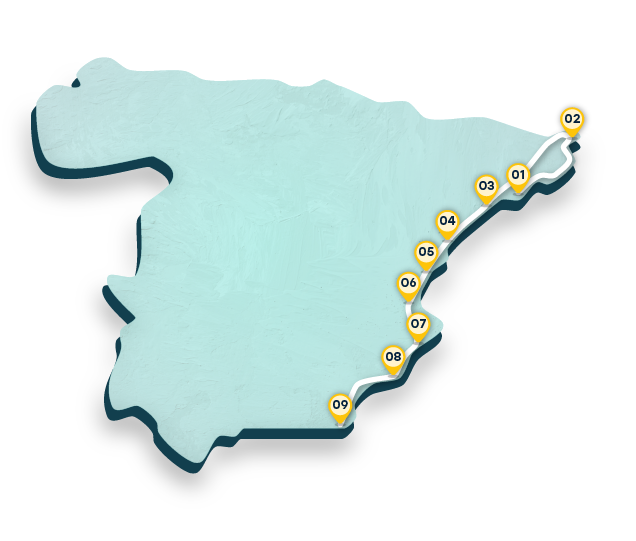Step 1: From Barcelona to the Costa Brava: northbound
We choose Barcelona as a starting point because it’s a huge transport hub. A good idea might be to head north for a couple of days to see the Costa Brava (Girona).
Distance:310km Journey: By car / Duration: 2 days
Beautiful bays like Roses, coves where the pine trees grow right to the shoreline, large seaside resorts like Platja d’Aro and Lloret de Mar, and the fishing villages that once inspired Dalí. These days you can see the homes he created and lived in, at the Dalí Theatre-Museum (in Figueres), the Salvador Dalí House-Museum (in Portlligat, Cadaqués) and the Gala Dalí Castle (Púbol). If you like to enjoy the scenery while you drive, we recommend taking the GI-682 road from Tossa de Mar to Sant Feliu de Guíxols and stopping at the viewing points. These are the distances between the different points of interest along the route:
- Barcelona – Roses: around 160 kilometres.
- Roses – Cadaqués: around 20 kilometres.
- Cadaqués – Platja d’Aro: around 100 kilometres.
- Tossa de Mar – Sant Feliu de Guíxols: around 20 kilometres.






















